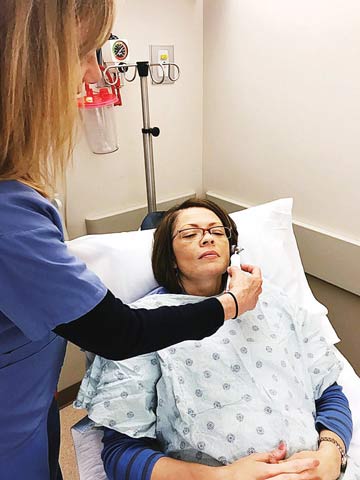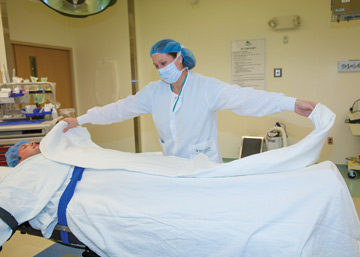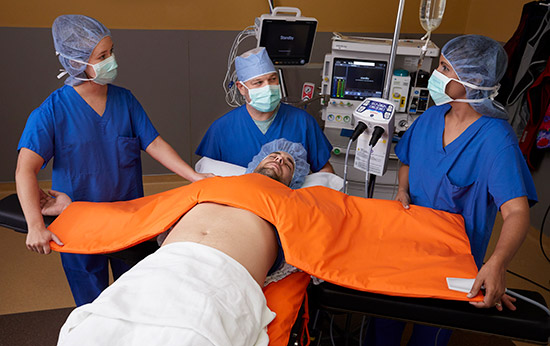Skin burns and even trips to the ICU can result if staff doesn't apply them correctly.
 CONSTANT CHECKS Staff should still closely monitor patient temperatures while warming devices are in use.
CONSTANT CHECKS Staff should still closely monitor patient temperatures while warming devices are in use.
Active patient warming can help prevent hypothermia and related complications such as cardiac trouble, impaired immune function, increased risk of infection and lengthier post-op stays. But if staff don't follow proper protocols for the technology's use and application, maintaining normothermia can cause more harm than good.
One big issue for staff to understand is that warming devices aren't solely for patient comfort. They're primarily therapeutic devices that, if used improperly, can harm a patient, says Michelle Feil, MSN, RN, CPPS, WCC, clinical practice leader at Penn Medicine in Philadelphia. Ms. Feil, who analyzed 278 harmful or potentially harmful events associated with patient warming devices to author a Pennsylvania Patient Safety Authority report, recalls some common categories of distressing mishaps:
- Thermal injuries. The most frequent incidents involved uses of warming devices that were inconsistent with manufacturer instructions for use (IFUs). One patient lied directly on top of a warming blanket during an appendectomy, resulting in skin reddening, even though the IFU specifically stated patients should never be positioned on top of the blanket, only covered by it. Another example: "free hosing," where a forced-air warming device's hose is placed underneath surgical drapes or the patient's blanket. This off-label use has resulted in serious patient burns because so much heat is concentrated in one area.
- Overheated fluids.. Many facilities warm IV or irrigation fluid as an adjunct to patient warming. Some, however, warm IV fluids in warming cabinets designed specifically for cotton blankets, an inappropriate practice that has led to patient burns. Fluid warming devices with integrated temperature monitoring systems can ensure fluids maintain recommended temperatures.
- Inadequate temperature monitoring. Staff members shouldn't be lulled into a false sense of security when using warming devices. They should always closely and continuously monitor patient temperatures while making sure they are using warming devices correctly. Ms. Feil recalls one incident she analyzed where a staffer set a warming blanket's temperature to 40°F instead of 40°C, which meant the patient was actually being cooled. The patient's body temperature dropped to 94.4°F and they were taken to intensive care postoperatively.
- Equipment mishaps. Often maintenance-related, most of these issues can be avoided by following the IFUs, which describe how to clean non-disposable surfaces with specified disinfectants, when and how to change filters, how to clean a warming device's tubing between every case and more.
- Skin tears. Ms. Feil analyzed examples of skin tearing caused by adhesive strips on warming blankets, as well as blisters on patients who were allergic to adhesives. She advises caregivers to be extra cautious when removing adhesives from patients, especially older individuals, current steroid users and those with histories of skin issues.
Ms. Feil believes hands-on training of staff who work with warming devices is crucial. "They need to know exactly how it works with real patients in real clinical situations," she says.
.svg?sfvrsn=be606e78_3)



.svg?sfvrsn=56b2f850_5)